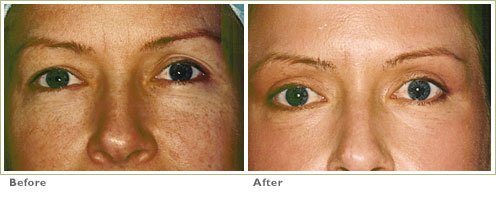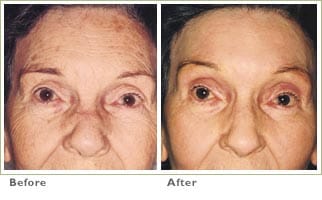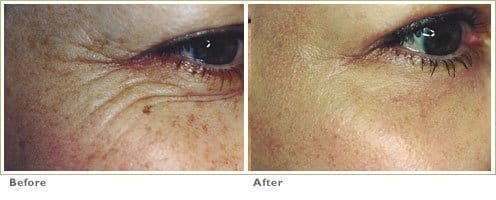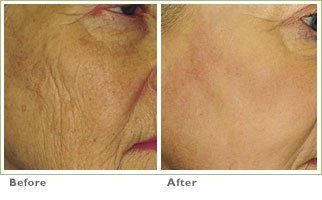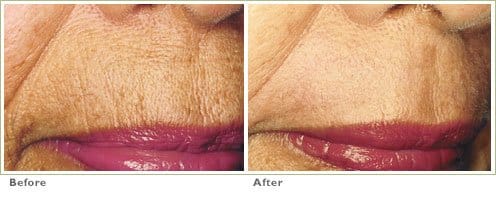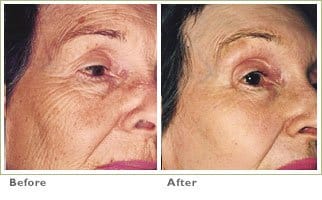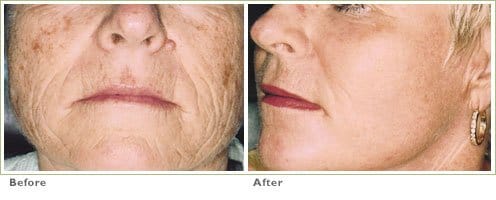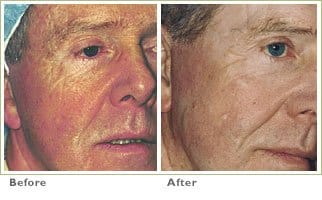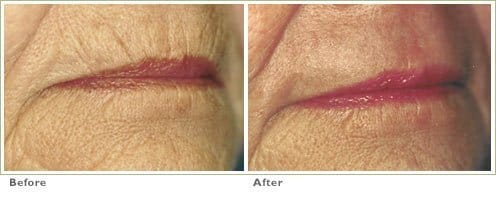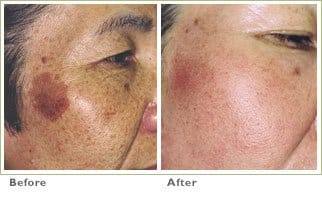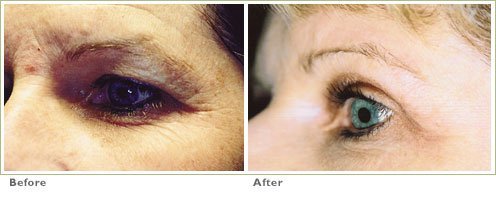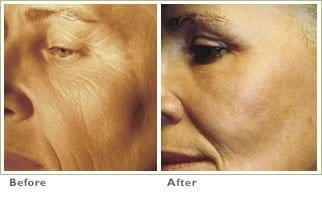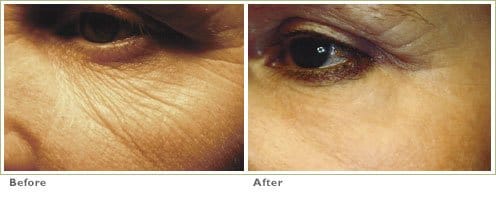Eyelid Sagging and Puffiness
About Ultrapulse Laser Resurfacing
Laser Skin Resurfacing with Active-FX FAQs
Q: How does CO2 skin resurfacing work?
A: The UltraPulse is a CO2 laser designed to offer the versatility of both deep and superficial, skin resurfacing. The wavelength of light emitted by a CO2 laser is very well absorbed by water in the skin. “Ultrapulses” of the laser vaporize lines, wrinkles, scars, dark spots and other irregularities, layer by layer. This process also stimulates the formation over time of new, underlying collagen to provide better elasticity and support for the skin.
With upper eyelid blepharoplasty, the CO2 laser removes loose skin, and if present, fat pads. On the lower lid, fat pads are removed with no visible incision and no stitches. Because the laser beam seals blood vessels as it touches them, the physician can clearly judge how much tissue to remove, and there is less swelling and bruising than with traditional eyelifts.
Laser Skin Resurfacing Tightens Skin
Laser Skin Resurfacing
Q: Can CO2 laser technology be used less invasively for treating milder indications?
A:With Lumenis’ CO2 laser technology, skin resurfacing is so precise that you can tailor treatment according to the nature and extent of photodamage, wrinkling, skin type and individual requirements for recovery time. For instance, the Active-FX peel using the unique CO2 Lite feature allows you to achieve a superficial laser peel with just one pass. CO2 Lite utilizes fluences that are below the ablation threshold and with a single pass imparts intraepidermal coagulation that is confined to the epidermis with little to no thermal injury in the dermis. In addition, the CoolScan program on the UltraPulse places pulses in such a manner as to minimize thermal conduction of heat to deeper tissues and reduce the recovery period. The epidermis is typically left intact and serves as a natural wound dressing. The coagulated epidermis sloughs off in 3-5 days. Downtime is typically 4-5 days and offer substantial results. Offering both superior results for treating deep wrinkles and the ability to achieve controlled superficial resurfacing, the UltraPulse is the most logical choice for an “all-in-one” resurfacing laser.
Q: What results can I expect, and how long will the benefits of treatment last?
A: Laser resurfacing can restore your skin to a healthy state, similar to that of skin that has not experienced sun damage or scarring. With proper sun protection, results can persist for more than five years. In areas where muscle activity is strong, lines may begin to reappear sooner. After laser eyelid surgery, the cosmetic improvement is usually sustained. Typically, only one blepharoplasty procedure is needed to remove excess skin and fat pads. As skin continues to age at a normal rate, you may advise your patient to maintain results with a ‘touch-up’ resurfacing treatment. In any event, with cosmetic laser surgery you will have definitively ‘turned back the clock.’
Q: What are the advantages of using authentic CO2 vs. erbium lasers with extended pulse widths?
A: A bilateral study comparing resurfacing with long pulse erbium:YAG followed by traditional short-pulse erbium ablation to UltraPulse CO2 followed by short-pulse erbium ablation (Rostan E, Goldman M, Fitzpatrick R. Laser Resurfacing With a Dual-Mode, Long-Pulse Erbium:YAG Laser Compared to the 950-µs Pulsed CO2 Laser. Am J Cosmetic Surg. 2000; 17(4):227-231.) found that there was no statistical difference in healing between the two sides and in 5 patients (26%), greater clinical improvement in periorbital lines, perioral lines, or both was noted on the UltraPulse CO2 side.
The value of utilizing authentic CO2:
• When addressing moderate to severe wrinkles, true high-energy short-pulsed CO2 technology has proven to be the superior modality.
• Physicians report that continued, progressive improvement in solar elastosis is seen post UltraPulse CO2 laser resurfacing.
• The hemostatic effect only afforded by CO2 provides superior visualization of clinical endpoints.
For surgical incisions, the cutting ability of CO2 is unsurpassed.
Laser Skin Resurfacing
Benefits
Reduces acne scars
Reduces or eliminates wrinkles
Reduce or eliminate brown spots and discoloration
Reduce the risk of skin cancer
Usually a one-time procedure
Improve skin tone
Tightens skin
Regenerates new collagen
Alternatives
Erbium Laser Resurfacing, Microdermabrasion, Punch Grafts, Injectable Fillers, Subcisions.
How Does it Work?
In order to remove scarred skin, a laser beam is passed over the surface of the skin, gently and precisely painting away unwanted cells, one layer at a time. Clinical investigations have consistently proven that laser skin resurfacing induces new collagen formation in the skin, resulting in the reduction or complete elimination of scars and wrinkles.
Importantly, the process of eliminating sun-damaged cells greatly reduces the chance of developing pre-cancers and skin cancers in later years. The length of the procedure depends on the amount of the surface area treated. Small areas may take 15 minutes, while the entire face is completed in approximately 40 minutes. After a short recovery period, patients return home.
Who is a Candidate?
Most individuals except those with the darkest skin tones can undergo this treatment.
What can I Expect?
Patients note a refreshed, tighter skin tone with reduced scars and a more youthful glow.
Results may vary.
Safety & Side Effects
Risks include scarring, infection, increase or decrease of the color of the skin. In experienced hands, these risks are minimal. The specific risks and the suitability of these procedures for a given individual can be determined only at the time of consultation. All surgical procedures have some degree of risk. Minor complications that do not affect the outcome occur occasionally. Major complications are unusual.
Recovery Time
4-5 days
Does it Hurt?
A topical anesthetic cream may be applied to the treatment areas prior to the procedure and most patients having a full face take an oral sedative.
Before Treatment Instructions
Avoid excessive tanning for before treatment.
After Treatment Instructions
Patients usually apply a moisturizer on their face for 4-5 days after the procedure. Patients should use a sunscreen and avoid tanning for one month after the procedure.
Who Performs the Treatments?
Our Physicians and Physician Assistants.
Laser Skin Resurfacing Gallery
Laser Skin Resurfacing for Wrinkles/Aging Skin
*Results may vary.






